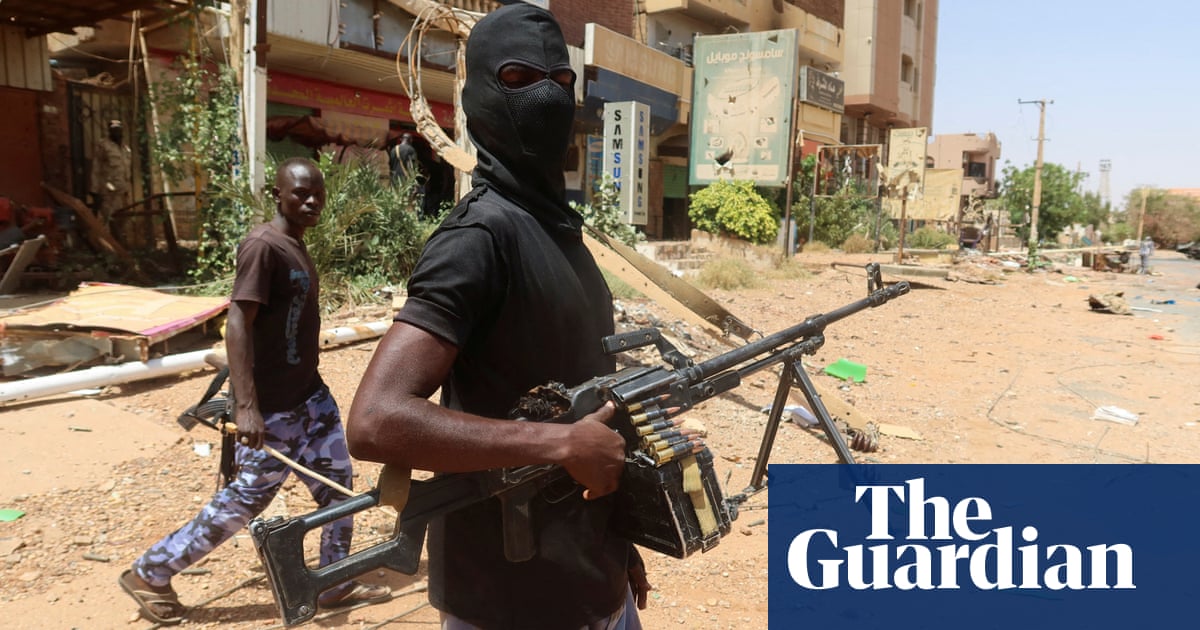Fighting broke outin Khartoum, Sudan’s capital, on 15 April 2023 as an escalating power struggle between the two main factions of the military regime finally turned deadly.
On one side are the Sudanese armed forces who remain broadly loyal to Gen Abdel Fattah al-Burhan, the country’s de facto ruler. Against him are the paramilitaries of the Rapid Support Forces (RSF), a collection of militia who follow the former warlordGen Mohamed Hamdan Dagalo, known as Hemedti.
The RSF was founded by the former dictatorial ruler Omar al-Bashir as an Arab counterinsurgency militia. Bashir wanted to crush a rebellion in the region ofDarfurthat began more than 20 years ago due to the political and economic marginalisation of the local population.
Initially known as theJanjaweed, the RSF quickly became synonymous with widespread atrocities. In 2013, Bashir transformed the group into a semi-organised paramilitary force and gave its leaders military ranks before deploying it to crush a fresh rebellion in South Darfur.
Hemedti’s power struggle with Burhan can be traced back to 2019 when the RSF and regular military forces cooperated tooust Bashirfrom power. When attempts to transition to a democratic civilian-led government faltered, many analysts felt an eventual showdown between Burhan and Hemedti was inevitable.
The conflict has plunged Sudan into what theUN has described as“one of the worst humanitarian nightmares in recent history”. Tens of thousands have died, millions have been displaced, and hunger and disease are rife.
According to the most recent figures, about 26 million people face severe food insecurity. Famine has been declared in the Zamzam displacement camp in Darfur.
About 11.3 million people have been forced to flee the fighting, including nearly 2.95 million who have fled across the country’s borders. Most have gone to Chad and SouthSudan, where underfunded aid agencies say they are struggling to meet basic needs. A UN appeal for $1.51bn to support Sudanese refugees and their hosts in the region through the end of the year remains just 27% funded.
In its latest humanitarian update, published on 1 October, the UN’s Office for the Coordination of Humanitarian Affairs said significant declines in vaccination rates and the destruction of health infrastructure resulting from the war mean Sudan is grappling with multiple disease outbreaks, including cholera, malaria, dengue fever, measles, and rubella. An estimated 3.4 million children under the age of five are at high risk of epidemic diseases, according to Unicef.
The conflict has also robbed huge numbers of an education. More than 90% of the country’s 19 million school-age children are unable to access formal education. Schools have been targeted in airstrikes, occupied by armed groups and used to store weapons.
The UN has accused the army and the RSF of carrying out indiscriminate attacks in residential areas, committing acts of sexual violence, arbitrarily detaining and torturing civilians and recruiting child soldiers. Both parties may have committed war crimes, a UN report in February said. They have denied the claims.
The US went a step further last year, declaring that both had carried out war crimes and that the RSF had committed crimes against humanity and ethnic cleansing.
Some of the war’s worst atrocities have been committed in Darfur, western Sudan. As many as 15,000 people were killed in the city of El Geneina in West Darfur last year by the RSF and allied Arab militias in violence targeted at the Masalit people. The US secretary of state, Antony Blinken, said the violence carried “haunting echoes of the genocide that began almost 20 years ago”.
In June, pro-democracy activists said the RSF killed more than 100 people in an attack on a village in central Sudan.
In recent weeks, the RSF has launched a full-scale attack on El Fasher, the only major population centre in Darfur it is yet to control. The attack follows a months-long siege. The city’s last hospital wasforced to closeafter the paramilitary group stormed it in June. The RSF is also advancing in regions south of Khartoum.
In the capital, which fell to the RSF early on in the war, the armed forces have gone on the offensive, pounding the centre and south of the city from the air this month.
Several rounds of negotiation efforts have so far failed to end the fighting.
Home to about 9 million people, Darfur, the vast and largely arid swath of western and south-westernSudan, has been at the centre of the conflict largely because it remains the stronghold of Hemedti. Many of the RSF’s recruits are drawn from the region and from Hemedti’s own Rizeigat tribe.
For years, the RSF has terrorised communities in Darfur and much of the region is lawless: militias and other armed groups attack civilians with virtual impunity. In recent years, the RSF has invested significant resources in Darfur in an attempt to control its strategic assets, such as airstrips, mines, water sources and major roads. Analysts trace many of the roots of the latest conflict back to the appalling violence and human rights abuses in Darfur about 20 years ago.
